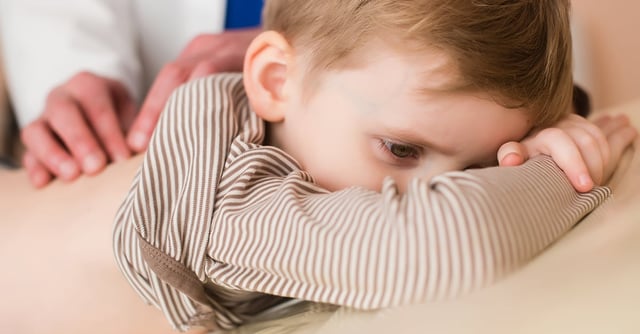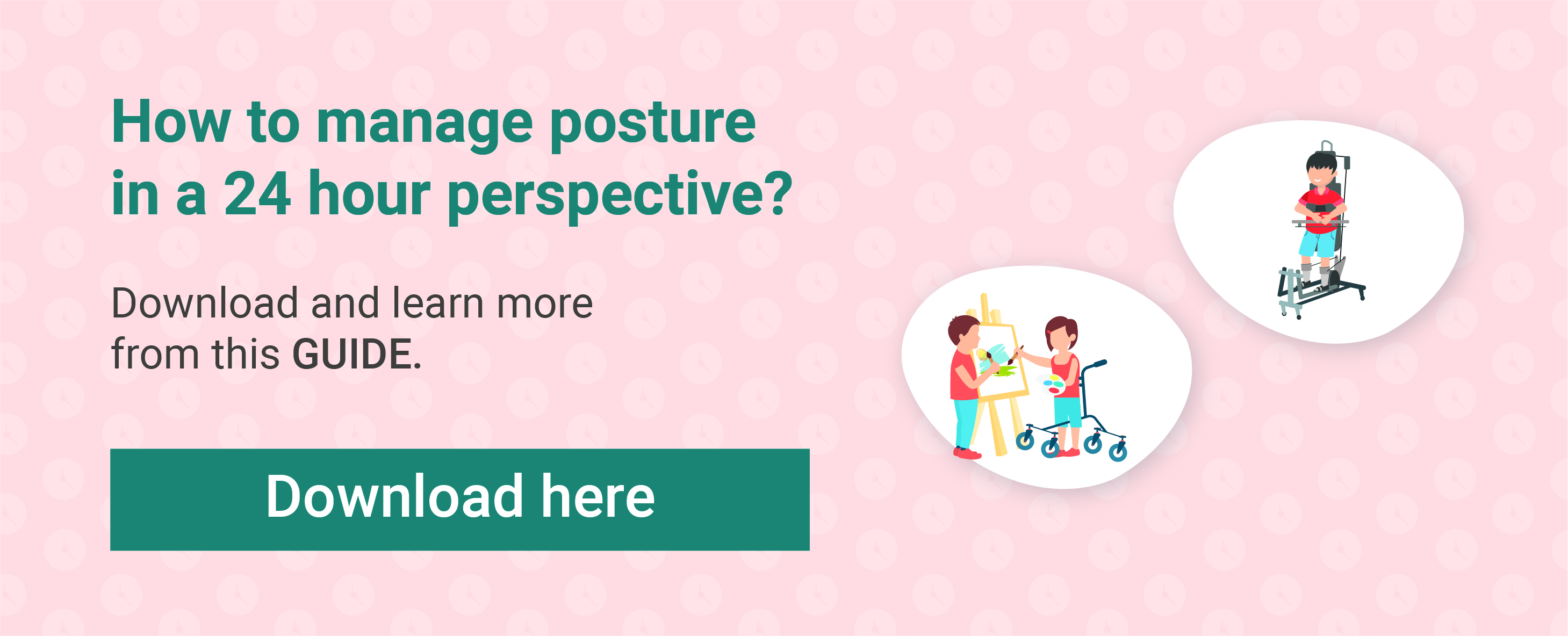
Aug 17, 2021How to manage pain in children and adults with cerebral palsy

Back to Blog Overview
Three out of four people with cerebral palsy (CP) experience pain. It is a complex, secondary condition compromising functional abilities and quality of life. Pain assessment is often challenging to perform, especially in non-verbal individuals with severe disabilities. Nevertheless, it should be carefully managed throughout life.
- What causes pain for someone with CP?
- What are the consequences of pain?
- Does pain occur differently in relation to motor function, sex and age?
- How to manage pain for people with CP?
What causes pain for someone with CP?
CP-related pain is often associated with secondary conditions such as contractures, spasticity, hip subluxation, gastrointestinal function, abnormal postures and scoliosis. Prolonged time in the same position, like in a wheelchair, can also cause pain.
Spasticity is one of the most common cause of pain. Spastic muscles interfere with movement of the body and limbs, and may over time, in combination with reduced motor function and inactivity, cause contractures, deformities and misalignments. A combination of all these factors will eventually cause pain. A resent published study from Sweden found that children are twice as likely to experience pain if they have an asymmetric posture, regardless of age and motor function. The most frequently and severe pain is reported, both by adults and children, in the area of the lower extremities, especially hip and thighs and the abdomen.
What are the consequences of pain?
If you or your child experience pain it may affect behaviour and ability to be active and participate in daily life, such as in school, at work and in social activities. Sleep may also be affected by pain.
In a population of children with CP within the age group 4-18 years, six out of ten children in pain reported that it disturbs daily activity, and one third reported that pain disturbs their sleep.
Over all, pain may affect quality of life not only for the child, but also for the family, therefore it is important to assess and manage pain at an early stage and throughout life.
Does pain occur differently in relation to motor function, sex and age?
Pain occurs within all gross motor function levels, classified with the Gross Motor Function Classification Scale (GMFCS). However, intense pain occurs more often in the higher levels of GMFCS (IV and V). I also seems like girls report more pain than boys, and pain intensity appears to be more severe for girls.
When growing into adulthood, intensive pain increases. Some studies indicate that the reason for increased pain may be a combination of overexertion and inactivity.
How to manage pain for people with CP?
To manage pain we first need to assess pain. What are the frequency and intensity of pain and where is it located?
Many people with CP are able to describe and rate pain by themselves, but for non-verbal individuals it can be more difficult. They are often relying on parents to rate their pain. Studies have shown that parents are considered good proxies in the recognition of their child’s pain. Typically, Face Pain Scales are used in combination with defining location and level of pain on a body. You will also need to describe to what extent pain is affecting normal activity and sleep. Over the last years augmentative and alternative communication (AAC) for non-verbal individuals has been at great help to let the individual express pain by themself.
Pain management is unfortunately still an area within CP that we do not know enough about. This is a challenge for the person experiencing the pain and also for parents who become desperate when seeing the child suffer.
There are several types of medication that can reveal pain. The most common types used are antispasmodics like botulinum toxin and baclofen. Reduction in spasticity often reduces musculoskeletal pain. In situations where there are deformities like scoliosis or hip dislocation causing pain, surgery may be necessary.
Read also: 6 things you should know about spasticity
Pain management is however far more than medication. Therapists will from very early childhood focus on maximising motor function and mobility, and they will support you as a parent with a 24-hour postural management program. The aim is to prevent acceleration of contractures, asymmetries and deformities, which over time are known risk factors for pain.
You can read more about 24-hours postural management here.
Continuous evaluation and management of pain is essential for people with CP to prevent and accommodate changes occurring as the child grows and the body and needs develop.
Do you want to know more about CP?
Read our resource page with answers to most of your questions.
Ressources
- Casey J, Rosenblad A, Rodby-Bousquet E. Postural asymmetries, pain, and ability to change position of children with cerebral palsy in sitting and supine: a cross-sectional study. Disabil Rehabil. 2020:1-9.
- McDowell BC, Duffy C, Lundy C. Pain report and musculoskeletal impairment in young people with severe forms of cerebral palsy: A population-based series. Research in Developmental Disabilities.
- Ostojic K, Paget SP, Morrow AM. Management of pain in children and adolescents with cerebral palsy: a systematic review. Developmental Medicine & Child Neurology. 2019;61(3):315-21.
- Rodby-Bousquet E, Alriksson-Schmidt A, Jarl J. Prevalence of pain and interference with daily activities and sleep in adults with cerebral palsy. Developmental Medicine & Child Neurology. 2021;63(1):60-7.
- Mckinnon CT, Meehan EM, Harvey AR, Antolovich GC, Morgan PE. Prevalence and characteristics of pain in children and young adults with cerebral palsy: a systematic review. Developmental Medicine & Child Neurology. 2019;61(3):305-14.
- Hägglund G, Burman-Rimstedt A, Czuba T, Alriksson-Schmidt AI. Self-versus Proxy-Reported Pain in Children with Cerebral Palsy: A Population-Based Registry Study of 3783 Children. Journal of Primary Care & Community Health. 2020;11:2150132720911523.

Rikke Damkjær Moen brings many years of experience as clinical physiotherapist to the Made for Movement team. Her mission is to ensure that everybody, regardless of mobility problems, should be able to experience the joy and health benefits of physical activity. As our Medical Manager, Rikke is passionate about sharing knowledge so that individuals with special needs, families, and clinicians can discover the possibilities and solutions provided by Made for Movement.


